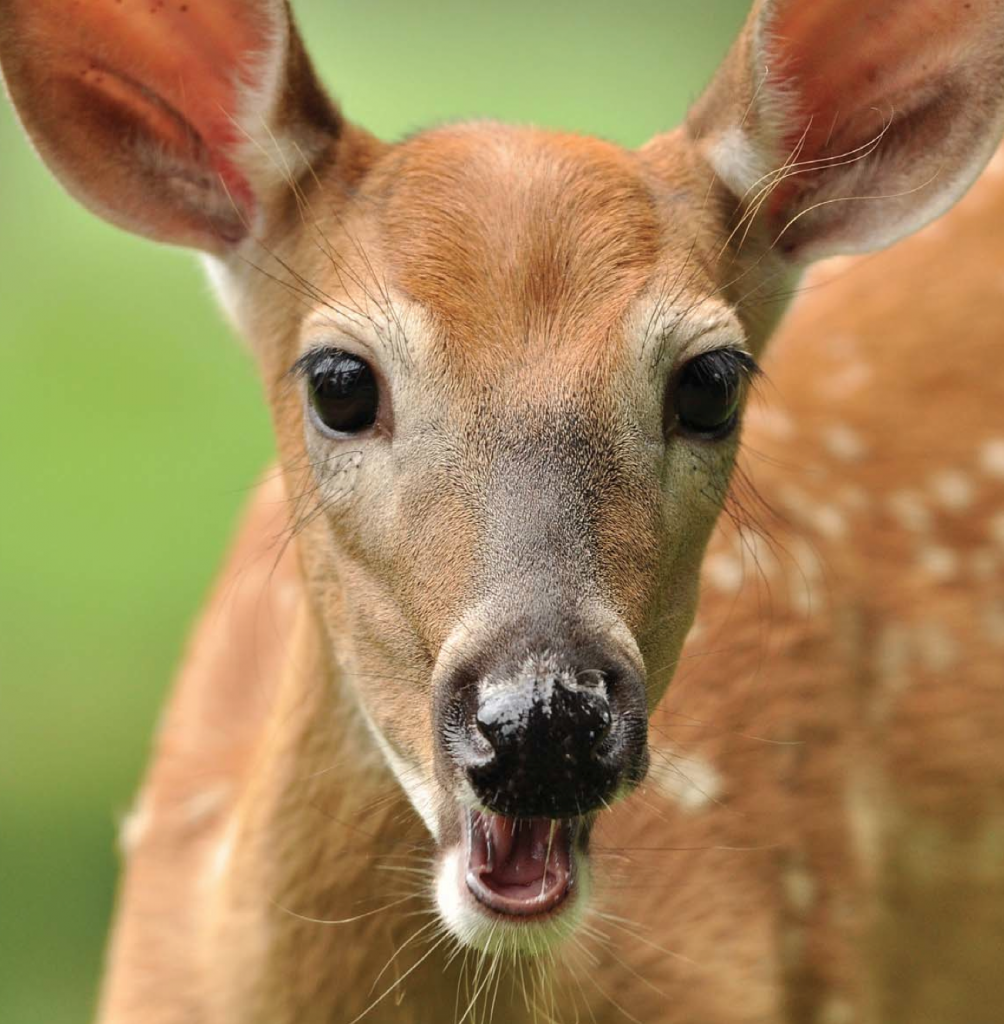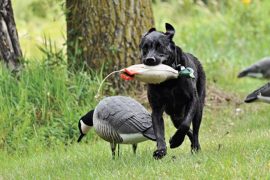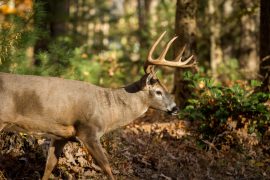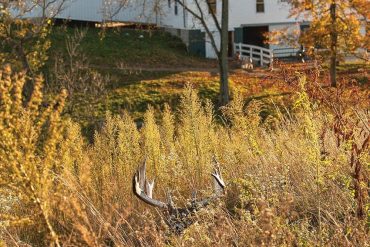
White-tailed deer are one of the most prolific deer species on Earth. Aside from being able to adapt to a wide variety of habitat conditions and environmental pressures, they can breed at a young age, produce more than one offspring per year and give birth at the most favorable time of the year. Given the proper circumstances, some whitetails can even breed when 6 to 8 months old. This special precocious trait allows deer populations to explode when conditions are right.
By John Ozoga
Whether a whitetail (male or female) reaches puberty and breeds in its first year will depend upon many poorly understood factors. Genetics, climate, nutrition, birth date, day length and social environment are some factors that can be involved. Although researchers still debate this phenomenon, they generally agree that late-born and malnourished individuals rarely achieve puberty and breed before 1 year of age. The mystical effects of deer social structure and density are not particularly clear. From a management perspective, it’s important to recognize that whitetails are capable of such an advanced rate of maturity, generally signaling favorable habitat and proper herd management. Most important, precocious fawns tend to become superior adults at a young age, making this phenomenon worthy of study and perpetuating when the management goal is to produce healthy and productive deer populations.
The Antlered Fawn
A buck fawn’s pedicles usually don’t become pronounced until the fawn is about 4 or 5 months old. That’s when the healthy fawn’s testes produce sufficient amounts of the male hormone testosterone to stimulate the laying down of additional pedicle bone. This process is closely linked to the fawn’s rate of maturity, testes development and ability to produce a certain amount of testosterone. It is not keyed to seasonal light cycles, as is future antler growth.
Some buck fawns might develop prominent pedicles topped with hardened button (that is, infant) antlers when 6 to 8 months old. Because such early antler development requires high levels of testosterone, buck fawns that develop infant antlers are presumably physiologically advanced and probably fertile. Conversely, late-born or severely stressed male fawns might not even grow pedicles during their first autumn.
The late antler researcher Richard Goss referred to infant antlers as a “unique zoological structure,” because it is impossible to pinpoint the exact time when pedicle growth gives way to antler development.

Infant Antler Research
Studies conducted at the Cusino Wildlife Research Station in Upper Peninsula Michigan found that well-nourished pen-raised buck fawns routinely grew infant antlers by mid-December. Likewise, 84 percent of the buck fawns raised in the Cusino square-mile enclosure grew button antlers when provided with unlimited supplemental feed. Most achieved antler calcification and polishing during early December, and all cast their small antlers before March.
By comparison, Harry Jacobson reported that only 20 percent of more than 200 buck fawns held in research facilities at Mississippi State University developed button antlers their first year.
Interestingly, Jacobson noted, “Not one of these was seen before the fourth week of January, and most developed these antlers in February and March. In other words, none could have been classified as legal antlered bucks during the deer hunting season.”
The frequency of infant antlers — hence achievement of puberty — among free-ranging buck fawns has not been intensively studied and is largely unknown. General observations suggest that only 5 to 10 percent of the buck fawns in most wild herds achieve polished infant antlers. But there are exceptions.
SEE ALSO: Learn How and Why Deer See Better Than Humans
About 37 percent of 130 buck fawns collected in January from the Crab Orchard National Wildlife Refuge in Illinois were presumed fertile based on the presence of polished button antlers. This high rate was obviously influenced by excellent nutrition. However, investigators concluded that late-born male fawns had minimal chance of achieving puberty.
Apparently, sexual maturity among buck fawns is a function of body weight and age. For male fawns to become fertile when 6 to 8 months old, they must be born early — during late May or early June — enjoy a high level of nutrition and weigh 90 pounds or more by December.
This phenomenon appears to be more prevalent in the Midwest and in Northern range, where it also tends to occur earlier, as compared to farther south. Although buck fawns have been known to impregnate doe fawns in captivity, their role as sires in the wild is unknown.
Researchers suggest that growth of infant antlers among buck fawns might be more prevalent than hunters realize, because most such development occurs after hunting seasons.
The Pregnant Fawn
Some female fawns achieve puberty and breed, a phenomenon that has been quite intensively studied with captive animals and documented in free-rang- ing deer populations. After intensive study of deer population dynamics in the 2-square-mile George Reserve deer enclosure in southern Michigan, Dale McCullough concluded that doe fawns breed only during superb conditions, when herds are well below carrying capacity and most newborn fawns survive.
To achieve puberty and breed at ages 6 to 8 months, female fawns must reach a certain critical body size. In the North, that size is about 80 to 90 pounds. For smaller Southern deer, it’s about 70 pounds. That doesn’t mean all animals reaching or exceeding these weights breed and reproduce, not even at low herd density.
Based upon studies at Cusino, it’s also important to recognize that a high incidence of precocious male fawns does not necessarily mean that a high proportion of female fawns in the same population breed. For example, in the Cusino enclosure, 84 percent of the male fawns grew infant antlers. At the same time, only 7 percent of the doe fawns conceived young.
Fawn Pregnancy Rates
The highest fawn pregnancy rate is in the Midwest. More than half of doe fawns typically breed in agricultural areas of Illinois, Iowa, Kansas, Missouri, Nebraska, Ohio, North Dakota and South Dakota, as well as in southern regions of Michigan, Minnesota and Wisconsin.
In Iowa, researchers found more than 70 percent of the doe fawns bred and that they carried an average of 1.25 fetuses per doe. Some even carried triplets.





